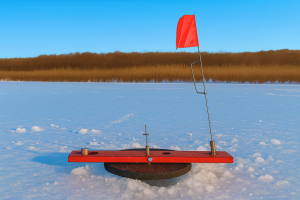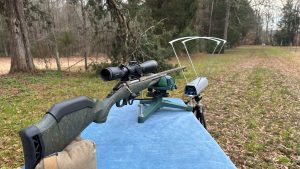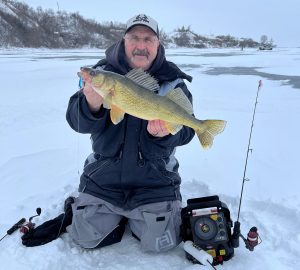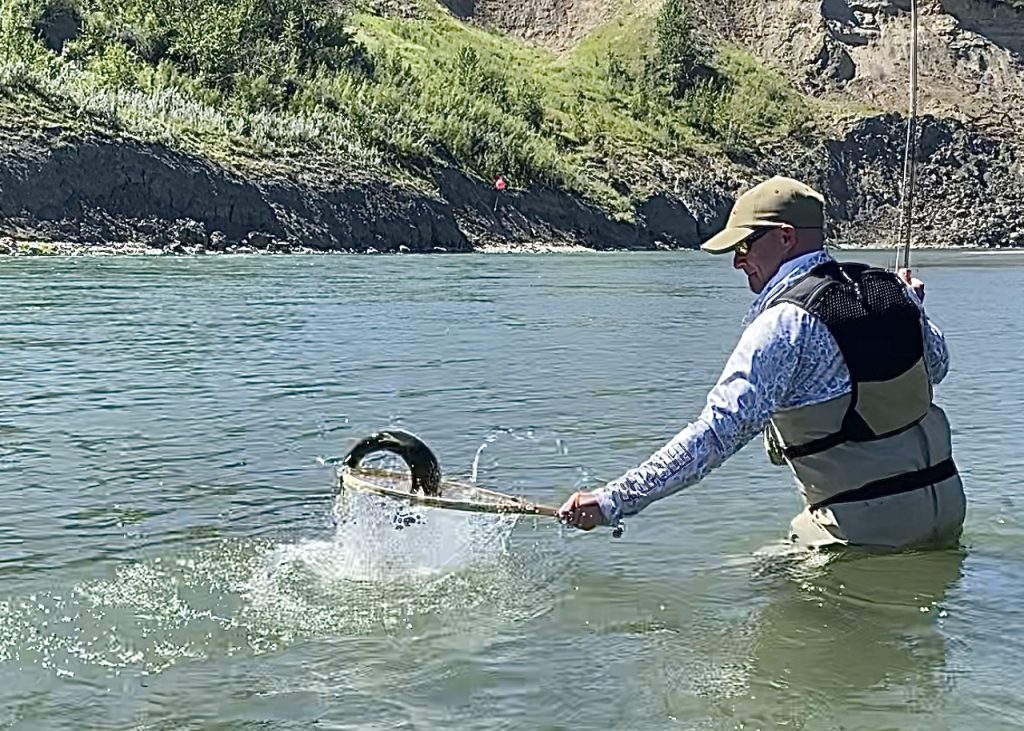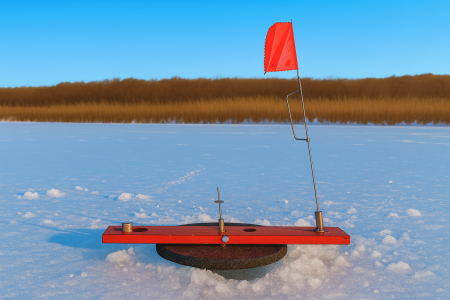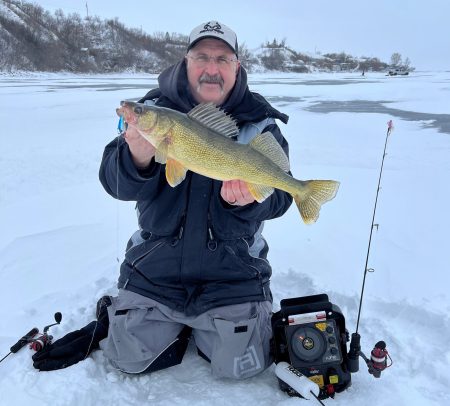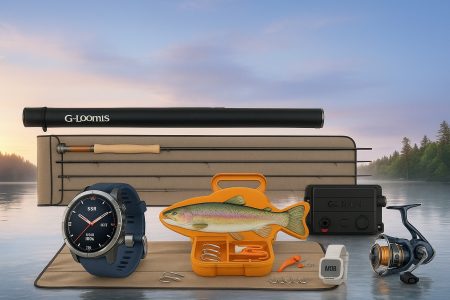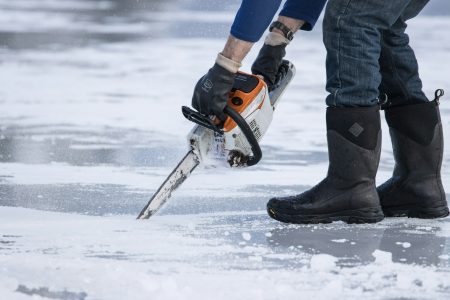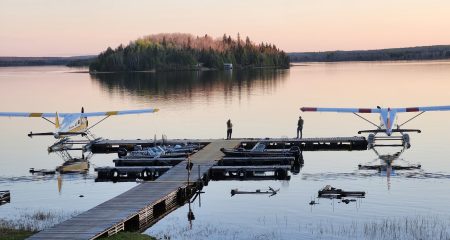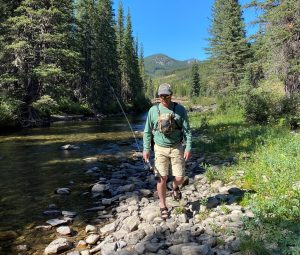
We’ve all stood on the bank of a stream, creek or river and studied it. Either confident in our ability to evaluate, or bewildered and not knowing where to begin, we try to figure out the best lies. After all, fish like structure, and it shouldn’t be all that difficult, right? Frankly, for fly fishermen and women, it’s an exhilarating part of the game. It is indeed a science and, once you learn where and why fish hang out in certain places, finding them becomes a lot easier. If you’ve yearned to wet a fly line but didn’t exactly know where to begin, this one’s for you.
Before you walk any bank or put on the waders, get yourself a suitable rig; most common for small to medium-sized trout, is either a 4-, 5-, or 6-weight rod. For starters, arm a matching reel with weight forward sinking tip floating line, some 4x or 5x tippet and you’re set. Keeping it simple, in my where I fish foothills and mountain streams, creeks and rivers, if I’m fishing the warmer summer months, I arm my fly box with an assortment of wet and dry flies (sizes #8 to #16) in stonefly, caddis and dragonfly nymph patterns, along with a few Blue-winged olives, mayflies, caddisflies, and requisite stimulator and hopper patterns for mid-to-late summer.
Gear in hand, you can then hit the water. Important at this point is understanding where fish lie, and consequently where to drop your fly in flowing water. I remember my first day walking and wading on the North Ram over 28 years ago. Haphazardly tossing my fly in every possible inch of water, through shear tenacity I landed a couple cutthroat, but if I knew then what I know today, I could have done a lot better for sure. If you’re a newbie, focus on these five hotspots and you’re sure to land a few on your next outing.
Deep Holes
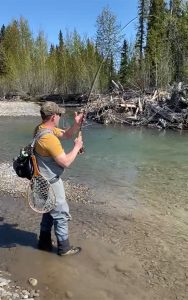
No doubt, deeper holes are a common focus of fly anglers, and arguably the most heavily targeted lies for trout. By deep, I mean a variety of spots that are at least three-to-four times deeper than the main run of flowing water. Visit any stream, creek or river and you will almost always find fish hiding in the deeper, often slower flow of these holes. Why? In part, because they are relatively undisturbed in these deep water lies.
Sharp bends in flowing water often have a cutbank or area where the bottom has been washed out. Debris carried downstream during spring break-up and flooding episodes frequently get lodged in these locations when water is fast flowing and high. In turn, big or small log jams are created. These are perfect shady hidey holes where fish can hang out. When it comes to textbook lies, this is prime fish-holding structure. Cutthroat trout, rainbows, brookies, browns, and bull trout along with mountain whitefish and grayling love the dark shady cover under those logs. This cover often allows them to wait facing into the current for a phenological meal to drift by. Depending on conditions, a dry fly cast just above the head of the hole and carefully run through close to the shadows will often entice a quick take. Remember though, if the trout appear disinterested, don’t leave without trying other dries or even switching to a nymph pattern. It’s a matter of offering them the meal they want, where they want it. Some days the action is better on top and other times, it’s better below the surface. Don’t be afraid to switch up your offering. Taking the time to change patterns along with your drift, can often be enough to catch whatever is lying beneath the surface.
Backwater and Plunge Pools
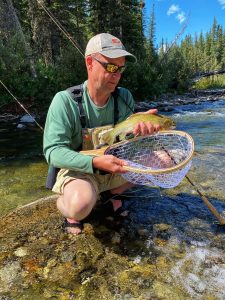
Whenever you fish smaller freestone creeks and streams with lots of protruding boulders, don’t neglect what would be described as the smaller lies. Be sure to probe all of the small-to-mid-size backwater spots and plunge pools where the flows slows and eddies. Often overlooked by others, they can produce really well. By description, these are spots where the current flows quickly past bigger rocks, creating smaller frothy turbulent backwater areas and plunge pools on the downstream side of the rock. A favorite lie for trout, these comparatively small structural barriers offer the perfect ambush spot to wait for a meal to drift by. The flow slows somewhat behind these bigger rocks making it easier for fish to rest and wait. The beauty in casting a nymph or dry fly for a drift into these backwater havens, is that whatever fish is there has little time to react, so the take is often swift and aggressive. If I’m fishing water that sees a lot of pressure, these frequently-overlooked spots can be dynamite. This type of structure is common on shallower run-off and weather-dependent systems. On a recent day of fishing, I hit every possible lie on a small foothills stream. It was loaded with cutthroat and bull trout, but all the obvious fish-holding lies were pounded heavily by other anglers. I could see fish in the clear water, and the odd one would take the fly, but it was obviously pressured water. In turn, I chose to focus a lot on the less obvious frothy water behind smaller boulders. That strategy produced extremely well brining eager feisty fish of both species to net.
Open Runs
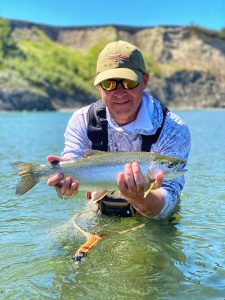
Never dismiss longer, slow-flowing runs. Trout love them, mostly because they can rest a bit in the slower current, while still keeping an eye out for drifting food. Depending on the size of the water, it may have some depth, but on a lot of medium and bigger streams and rivers, these stretches often become shallower. Trout, whitefish and grayling commonly move out into these runs to capitalize on a hatch. Even if it’s their regular haunt, some will favor this slower flowing water as a place to lie in wait for a meal to drift by or fall from a bank. Virtually every flowing water system has open runs. One of my favorite blue-ribbon waters is the famous Bow River in Alberta. My partner and I commonly take a drift boat. Sliding by the cutbanks, we’ll toss our fly close to shore and let it drift with a tiny strike indicator. A slow sip or a violent attack, and its game on as browns, rainbows and Rocky Mountain whitefish feast on bugs tight to the riverbank. Similarly, though, I’ve also haphazardly drifted nymphs under an indicator, in some of the most unsuspecting slower moving deep runs, and come up with feisty rainbow trout that would get any ardent fly fisher cranked up! While there are always exceptions, the key to fishing longer, calmer, and often more clear water runs, is to stay out of sight. In other words, a bit of stealth is in order, especially if the water is gin clear. Note again, that fish always face upstream into the current. In these open runs, they’re watching both above the surface and below. They’re waiting for bugs to land and float, and sub-surface nymphs, pupae, and other menu options to drift by in the current. These runs afford them the privilege of time and evaluation. Fail to present your fly in a natural drift and you can usually kiss that opportunity goodbye.
Seams Along Calm Backwaters
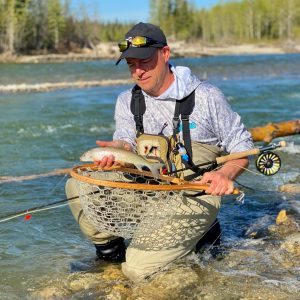
In my experience, these fish-holding locations are more obvious on medium-to-bigger sized rivers. Distinctly visible seams between the fast flow and calm backwater stretches found behind gravel bars, can be exceptional places to find eager fish again waiting for food to drift by. Positioning yourself to cast from the faster flowing side allows you to drift your fly along the seam with ease. Alternatively, if you’re fishing from shore, or even walking and wading, you can often position yourself for the perfect cast. Landing your fly pattern of choice at the top end and allow it to drift naturally just barely inside the slack water, and your odds of enticing a take go up exponentially. Over 35 years ago this summer, I caught my very first trout on a fly on a mountain stream seam. Just remember, you’re targeting fish that line up along calmer water to wait for food drifting downstream in the main current.
Riffles
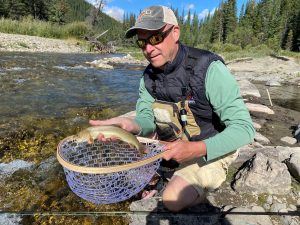
Some of the best grayling and trout fishing I’ve ever experienced has been smack dab in the middle of faster flowing riffles on small streams and creeks. Riffles are caused by structure below the surface, usually rocks, but it could even be lodged debris under the water. Grayling and trout love to wait in this mildly turbulent water to capture unsuspecting nymphs, flies, hoppers and other food. Whether the water is gin-clear or tea-cup in color, don’t overlook the riffles. Never overlook the smaller creek and stream riffles. Every now and then, they produce lots of eager fish.
In the end, reading flowing water is a skill. It takes time to learn how to decipher the best spots to drop your fly. Know that the biggest fish often occupy the best lies; places where the prime food, protection and reprieve from the current give them all they need to thrive.
All told, fly fishing is really about giving your target species a chance to take a pattern that looks like a bug in various stages of development. Land it on the water to present it as naturally as possible, in any of the aforementioned places, and you’re sure to see success.
Per our affiliate disclosure, we may earn revenue from the products available on this page. To learn more about how we test gear, click here.

